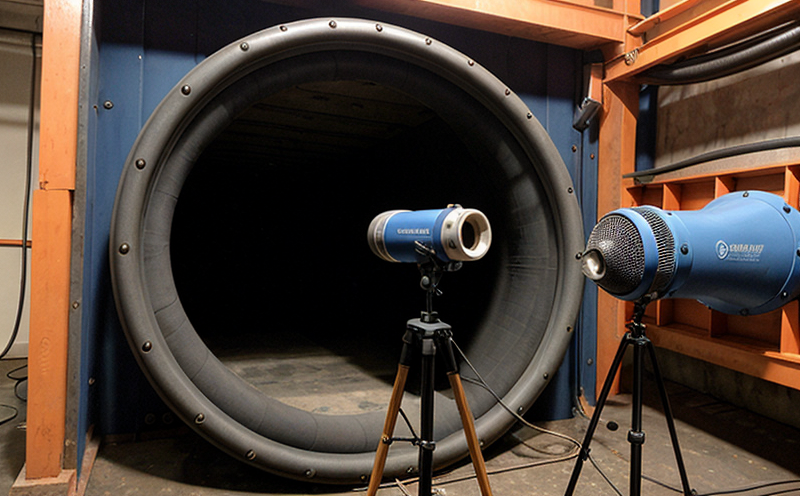ISO 15548 Ultrasonic Testing Equipment Characterization
The ISO 15548 standard provides a framework for characterizing ultrasonic testing (UT) equipment, ensuring that the devices meet performance specifications and are fit for purpose in various inspection applications. This service is crucial for industries reliant on UT to ensure product integrity and safety.
ISO 15548 defines specific parameters and procedures to evaluate the accuracy, sensitivity, and resolution of ultrasonic testing equipment. The standard covers both contact and immersion techniques, providing a comprehensive approach to characterizing UT devices used in industrial sectors such as aerospace, automotive, and manufacturing.
The characterization process involves measuring key performance indicators (KPIs) including frequency response, amplitude linearity, phase stability, and signal-to-noise ratio. These metrics are essential for ensuring that the equipment can accurately detect flaws within materials without introducing false positives or negatives.
For instance, in aerospace applications, accurate UT is critical to identifying potential cracks or other defects in turbine blades or fuselage components. Proper characterization ensures that inspectors can rely on consistent and reliable UT data during production and maintenance phases.
The ISO 15548 process typically begins with selecting appropriate calibration standards and test blocks that mimic the properties of actual materials likely to be inspected. These reference materials are used to establish a baseline for performance, allowing technicians to assess deviations from expected values.
Throughout the testing procedure, it is important to maintain strict environmental controls such as temperature stability, which can significantly affect ultrasonic wave propagation. This ensures that the results obtained during characterization accurately reflect real-world conditions under which the equipment will be used.
The ISO 15548 standard also emphasizes the importance of operator training and proficiency in performing UT inspections using calibrated equipment. By ensuring that operators are competent, the risk of human error is minimized, further enhancing the reliability of test results.
Once all measurements have been taken, detailed reports summarizing the findings are generated. These documents include graphical representations of frequency response curves, amplitude linearity plots, and other relevant data points. They also outline any discrepancies found between measured values and manufacturer specifications or industry standards.
This level of detail allows stakeholders to make informed decisions regarding whether a particular piece of UT equipment meets required performance levels before deployment in critical applications like manufacturing or maintenance workflows.
Applied Standards
| Standard Number | Description |
|---|---|
| ISO 15548-1:2019 | Characterization of Ultrasonic Testing Equipment - Part 1: General Requirements and Definitions |
| ISO 15548-2:2019 | Characterization of Ultrasonic Testing Equipment - Part 2: Frequency Response, Amplitude Linearity, and Phase Stability |
| ASTM E746-19 | Standard Practice for Characterization of Ultrasonic Testing (UT) Instruments and Systems |
Quality and Reliability Assurance
The quality and reliability assurance process associated with ISO 15548 ultrasonic testing equipment characterization involves several key steps designed to ensure that the tested devices consistently meet specified performance criteria. These measures are particularly important given the critical role UT plays in ensuring product integrity across diverse industrial sectors.
Firstly, selecting appropriate reference materials is crucial for accurate characterization. Reference blocks made from materials similar to those being inspected provide a reliable basis against which equipment performance can be measured. Ensuring that these references accurately represent real-world scenarios helps validate the accuracy of UT results obtained during production or maintenance activities.
Secondly, maintaining consistent environmental conditions during testing is essential for obtaining repeatable and reproducible results. Factors such as temperature fluctuations can significantly impact ultrasonic wave propagation characteristics, thereby affecting measurement precision. By controlling these variables through precise calibration techniques, technicians ensure that the data collected accurately reflects actual working conditions.
A third critical aspect of quality assurance involves regular validation checks performed by qualified personnel. These periodic assessments help identify any drift in equipment performance over time due to wear and tear or changes in operational parameters. Addressing such issues promptly ensures continued compliance with established standards and enhances overall confidence in the integrity of UT inspections conducted using these devices.
Finally, robust documentation practices are vital for maintaining traceability throughout the entire characterization process. Detailed records of all test procedures performed, along with corresponding results obtained, provide valuable insights into equipment performance trends over time. This information is particularly useful when troubleshooting discrepancies or validating the effectiveness of implemented corrective actions.
Customer Impact and Satisfaction
- Enhanced confidence in product integrity through accurate UT inspections
- Maintained regulatory compliance by ensuring equipment meets required standards
- Reduced likelihood of costly rework or recalls due to undetected flaws
- Improved efficiency in manufacturing processes thanks to reliable UT data
- Promotion of safer working environments where critical components are free from defects
- Increased competitiveness for businesses operating within highly regulated industries
- Better resource allocation through informed decision-making based on accurate characterization results
- Enhanced reputation among clients and partners due to demonstrated commitment to quality assurance practices





